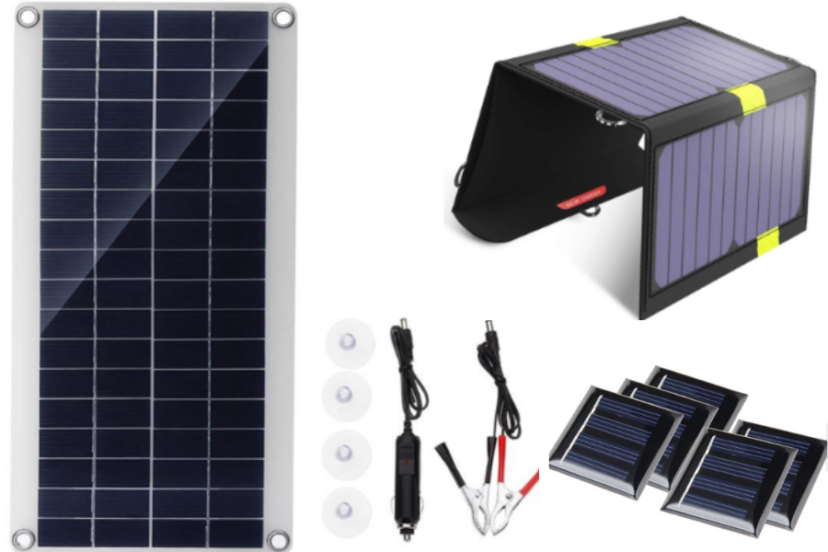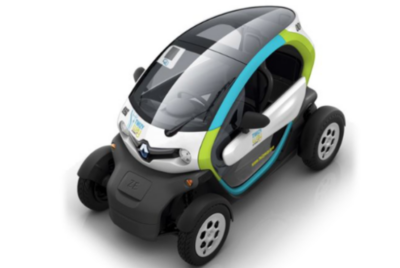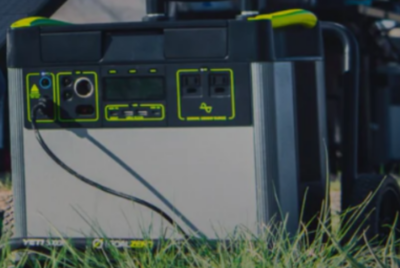Portable Solar Panels for RV
Harnessing the Sun’s Power on the Go
As an electrical engineer and fervent advocate of solar energy, I’m thrilled to guide you through the remarkable world of portable solar panels for RV design for all RV enthusiasts. In this article, we’ll embark on a journey exploring the incredible benefits, selection considerations, and practical tips for integrating portable solar panels into your RV lifestyle. Whether you’re a seasoned traveler or a newcomer to the world of solar energy, get ready to unlock the potential of the sun and power your adventures with eco-friendly innovation.
Introduction to Portable Solar Panels for RV
Picture this: You’re cruising down the open road in your RV, seeking adventure and embracing the freedom of the great outdoors. Now, imagine having the ability to harness the sun’s abundant energy to power your appliances, devices, and creature comforts. That’s where portable solar panels for RVs step in – transforming sunlight into a clean, reliable power source that accompanies you wherever the road takes you.
As an electrical engineer with a passion for sustainable energy solutions, I’ve witnessed the transformative impact of portable solar panels on RV lifestyles. From reducing reliance on traditional power sources to embracing eco-conscious living, the advantages are truly remarkable. In the following sections, we’ll delve into the multitude of benefits and provide you with practical insights to make informed choices that align with your RV journey.
The Advantages of Embracing Solar Energy on Your RV
Before we dive into the technical aspects, let’s explore why integrating portable solar panels into your RV experience is a decision that reaps rewards on multiple fronts.
Efficiency Beyond Boundaries: Traditional RV setups often rely on generators or campground hookups, limiting your freedom to explore off-grid destinations. Portable solar panels empower you to venture into nature’s heart without sacrificing modern comforts.
Silent Power Generation: Unlike generators that emit noise, portable solar panels operate silently, preserving the tranquility of your surroundings and enhancing your camping experience.
Reduced Carbon Footprint: By tapping into the sun’s energy, you’re actively contributing to a cleaner environment by minimizing the carbon emissions associated with conventional power sources.
Financial Savings: With portable solar panels, you can significantly reduce your reliance on pricey campground hookups and fuel for generators, leading to substantial long-term savings.
Low Maintenance: Solar panels require minimal upkeep, ensuring hassle-free power generation while you focus on making memories on the road.
Intrigued by the possibilities? Let’s explore the considerations that guide your selection of the perfect portable solar panel setup.
Selecting the Right Portable Solar Panel Setup
The key to a successful solar-powered RV journey lies in selecting a portable solar panel setup that aligns with your energy needs and travel style. Let’s break down the crucial factors that influence your decision.
Understanding Solar Panel Wattage and Efficiency
The wattage of a solar panel directly impacts its power output. Higher-wattage panels generate more electricity in the same amount of sunlight. However, don’t solely focus on wattage; efficiency matters equally. High-efficiency panels convert a larger portion of sunlight into usable energy, maximizing your power generation potential.
When choosing panel wattage, consider the energy consumption of your RV appliances, devices, and lighting. A comprehensive understanding of your power needs ensures you select a setup that meets your requirements without overloading or underperforming.
Evaluating Battery Capacity and Storage
Portable solar panels work in tandem with your RV’s battery system. During sunny days, excess energy generated by the panels is stored in your batteries for use during the night or cloudy periods. Therefore, evaluating your battery capacity is vital. Insufficient battery storage can lead to power shortages when sunlight is scarce.
Determine your battery’s ampere-hour (Ah) rating and compare it with the energy output of your chosen solar panels. This alignment guarantees a harmonious balance between energy generation and storage, providing consistent power availability.
Portability and Ease of Installation
The allure of portable solar panels lies in their mobility. Consider the weight, size, and foldability of the panels, especially if you have limited storage space in your RV. Opt for panels that can be effortlessly transported and set up.
Quick and hassle-free installation is crucial for an enjoyable RV experience. Look for panels that come with user-friendly mounting options, allowing you to securely attach them to your RV’s roof or ground-based mounting systems.
In the next section, we’ll explore the nuances of choosing between different types of solar panels and their impact on your RV journey.
Choosing Between Monocrystalline, Polycrystalline, and Thin-Film Panels
As you navigate the world of portable solar panels, you’ll encounter three main types: monocrystalline, polycrystalline, and thin-film panels. Each type comes with its own set of characteristics and advantages.
Monocrystalline Panels: These panels are known for their high efficiency and sleek appearance. They’re made from single crystal structures, allowing them to convert sunlight into electricity with exceptional efficiency. Monocrystalline panels are ideal for RV owners seeking maximum power output from a limited panel area.
Polycrystalline Panels: Polycrystalline panels are slightly less efficient than monocrystalline panels but are often more affordable. They’re made from multiple crystal structures, which can result in a slightly lower energy conversion rate. However, advancements in technology have minimized this efficiency gap, making polycrystalline panels a cost-effective choice for RV enthusiasts.
Thin-Film Panels: Thin-film panels are flexible and lightweight, making them a versatile option for RV installations. They’re less efficient than crystalline panels but excel in unconventional setups. Thin-film panels are an excellent choice if you have limited space or require a panel that can conform to curved surfaces.
When selecting the right panel type, consider factors such as available space, efficiency, budget, and your specific energy needs. The next section will guide you through the intricacies of optimizing solar panel placement for maximum efficiency.

Optimizing Solar Panel Placement for Maximum Efficiency
The sun’s positioning in the sky plays a pivotal role in the efficiency of your solar panels. To harness the sun’s energy optimally, strategic panel placement is essential.
Following the Path of the Sun
The sun’s path changes throughout the day, shifting from east to west. To maximize energy generation, position your panels facing south (in the Northern Hemisphere) or north (in the Southern Hemisphere). This orientation ensures that your panels receive the most sunlight exposure over the course of the day.
Overcoming Shading Challenges
Shade significantly impacts solar panel efficiency. Even a small portion of a panel covered by shade can drastically reduce its output. When selecting a parking spot for your RV, choose an area with minimal shading from trees, buildings, or other obstructions.
Using Tilt Kits for Seasonal Adjustments
To optimize energy capture during different seasons, consider using tilt kits. These adjustable mounts allow you to tilt your panels at an angle that aligns with the sun’s lower or higher position in the sky. This adjustment compensates for the sun’s varying angle during different times of the year.
In the upcoming section, we’ll delve into the role of solar charge controllers and inverters in your RV solar system.
Understanding Solar Charge Controllers and Inverters
Portable solar panels are part of a comprehensive system that includes vital components like solar charge controllers and inverters. Let’s explore their roles and significance.
Preventing Overcharging with Charge Controllers
Solar charge controllers, also known as solar regulators, monitor the energy flowing from the panels to your batteries. They prevent overcharging by regulating the voltage and current entering the batteries. Overcharging can damage your batteries and reduce their lifespan. Charge controllers ensure that the energy transferred to your batteries is within safe limits.
Converting Solar Energy into Usable Power with Inverters
Solar panels generate direct current (DC) electricity, while most RV appliances and devices require alternating current (AC). Inverters bridge this gap by converting DC power into AC power. This conversion enables you to use your electronic devices and appliances seamlessly, just as you would with traditional power sources.
In the realm of solar energy, charge controllers and inverters are the unsung heroes that ensure your energy ecosystem functions harmoniously. But how do you ensure a successful installation and ongoing efficiency? That’s the focus of our next section.
Installation and Maintenance: Tips for Long-Term Success
Installing portable solar panels on your RV requires attention to detail and a commitment to maintenance. Let’s explore key tips for a successful installation and the upkeep needed for consistent performance.
Securing Panels Safely in Your RV
When installing solar panels, prioritize safety. Choose sturdy mounts that secure the panels to your RV’s roof or ground-based systems. Ensure that the panels are properly aligned, fastened securely, and capable of withstanding various weather conditions.
Keeping Panels Clean and Efficient
Clean panels are efficient panels. Dust, dirt, and debris can accumulate on the surface of your solar panels, reducing their energy absorption capacity. Regularly clean the panels using a soft cloth or a gentle stream of water. Avoid using abrasive materials that can scratch the surface.
Regular System Checks and Maintenance
Just as you perform routine checks on your RV’s mechanical components, dedicate time to regularly inspect your solar panel system. Examine the wiring, connections, and components for signs of wear or damage. Address any issues promptly to maintain peak efficiency.
Economic and Environmental Advantages of Portable Solar Panels
The integration of portable solar panels into your RV lifestyle offers economic and environmental advantages that extend far beyond your travels.
Reduced Reliance on Campground Hookups
Campground hookups often come with a price tag. By generating your own power through solar panels, you reduce or eliminate the need for expensive hookup fees. This financial freedom allows you to invest in more experiences during your travels.
Lowering Fuel Costs and Emissions
Generators, often fueled by gasoline or diesel, contribute to fuel expenses and environmental pollution. Portable solar panels significantly reduce or eliminate the need to run generators, resulting in lower fuel costs and decreased emissions.
Contributing to a Greener Planet
Every kilowatt-hour of energy generated by solar panels reduces the demand for electricity from traditional power sources, which often rely on fossil fuels. By embracing solar energy, you’re actively participating in a global effort to combat climate change and preserve our planet for future generations.
Frequently Asked Questions (FAQs)
1. Are portable solar panels suitable for all types of RVs?
Absolutely! Portable solar panels can be adapted to various types of RVs, from motorhomes to travel trailers. It’s essential to choose panels that match your RV’s energy needs and available space.
2. How much power can I expect to generate from portable solar panels?
The power generated depends on factors like panel wattage, efficiency, sunlight exposure, and battery storage. On a sunny day, a high-efficiency 100W panel can generate around 400-600 watt-hours of energy.
3. Can I expand my solar panel setup in the future?
Yes, many portable solar panel setups are modular, allowing you to add more panels to your existing system. This scalability enables you to increase your power generation capacity as needed.
4. Do I need to be a solar energy expert to install and use these panels?
Not at all! While a basic understanding of your RV’s electrical system is helpful, many portable solar panel kits come with user-friendly instructions for installation. It’s essential to follow the manufacturer’s guidelines for a safe and successful installation.
5. What is the lifespan of portable solar panels?
Portable solar panels typically have a lifespan of 25-30 years or more, making them a durable and long-term investment for your RV journey.
Conclusion: Powering Your Journey with Sunshine
As we conclude our exploration of portable solar panels for RVs, I invite you to envision a future where your travels are powered by the sun’s abundant energy. By harnessing the power of solar technology, you’re not only enhancing your RV experience but also contributing to a cleaner and more sustainable world.
Embrace the opportunity to power your journey with sunshine. From the thrill of off-grid adventures to the serenity of nature’s embrace, the potential is limitless. I’m passionate about solar energy and excited to witness the positive impact of solar panels on RV lifestyles. Embrace the solar revolution and let the sun accompany you on every mile of your remarkable journey.




